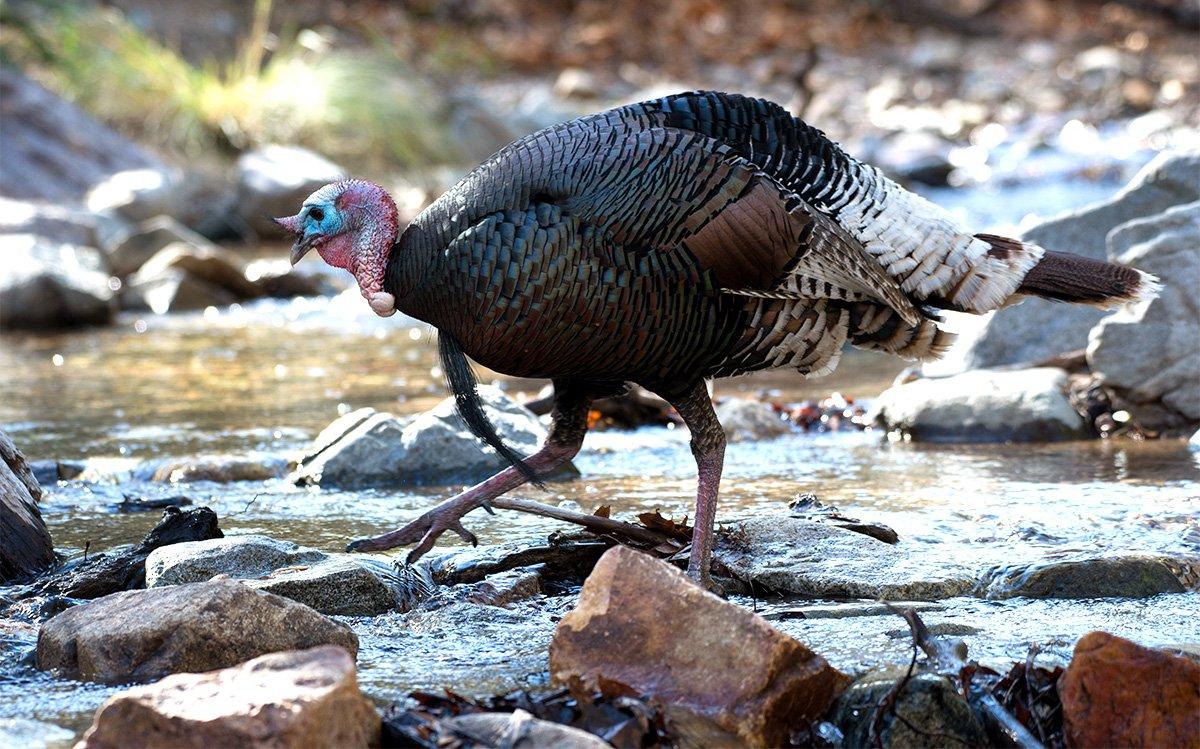Some hunting strategies for wet-footed turkeys
Tagging a spring gobbler when they roost over land is tough enough. Put one high in trees over water as you start your hunt, and that compounds the difficulty. Where will that bird fly down? Where will it go after it does? The chess-game analogy comes to mind.
Study Up
Hunting fresh turkeys in a new location? First, look for water sources on the map, with potential roost trees nearby.
Watch — and listen — to see what those water birds do. You should know where they like to fly down before gathering and moving off. How the flock regroups will tell you where to be the next day. Envision how the birds will come to you when you call. Look for dry land where the flock drifts to open spaces as toms strut and hens poke along, feeding. You should also know where they are positioned the evening before the morning you plan to hunt them.
Your Next Move: Rise earlier than you usually do and slip into the woods toward roosted water turkeys you located. With the knowledge of how water birds move through wet spaces along dry areas, you can set up and call just as you would when working a turkey not roosted over water.
Shut Up
Okay, you found some birds. And they roost over water. You patterned them. But you had trouble getting a gobbler to break your way as you called to it. If there is ever a situation to keep your calls in vest pockets, this might be one.
Sit tight, quietly waiting for the woods to wake up. Avoid movements — if you must call, make it a hands-free mouth diaphragm. And keep it soft, subtle, just clucks and sweet yelps. Still, simply let the water-roost turkeys fly down. Feeling lucky? That tom might do so in range.
Your Next Move: Part of the fun of spring turkey hunting involves the tactics you use. Calling is a factor, or staying quiet, depending, as those silences kill birds too. So is where you sit in relation to turkeys in trees — especially for birds roosting over water.
[Quiet Wheels: Ride Your Bike to Turkey Hunt]
Ease Up
Spring gobblers roost over land or water, keying on the movements of hens. Eastern wild turkeys and Merriam's out West both haunt river bottoms. Osceola turkeys love cypress swamps, flying down to gator-filled habitats, then moving to sandy-white farm roads or trails. From there, they mince steps to open pastures. Rios will even sometimes roost over dry creek beds if cover provides.
They start in trees over water. They fly down and move to open spaces. And the flock will hang around there all day. Loaf in shady wooded hammocks or edge cover by midday. By late afternoon, the group will often feed as shadows overtake pastures, then move back to the water roost. And if the grassy expanse is close enough to their branch sleeping spots, birds will fly right up from where they landed that morning.
Your Next Move: Maybe you want to use decoys to add an edge, staking some on that turkey fly-zone tarmac. Maybe not. Either way, be there when your water birds hit the ground or go airborne for trees.
[Plan B: There's Another Turkey Hunter in Your Spot. Now What?]
What makes Realtree.com the best online resource for turkey hunters? See for yourself. We cover all things turkey right here.








